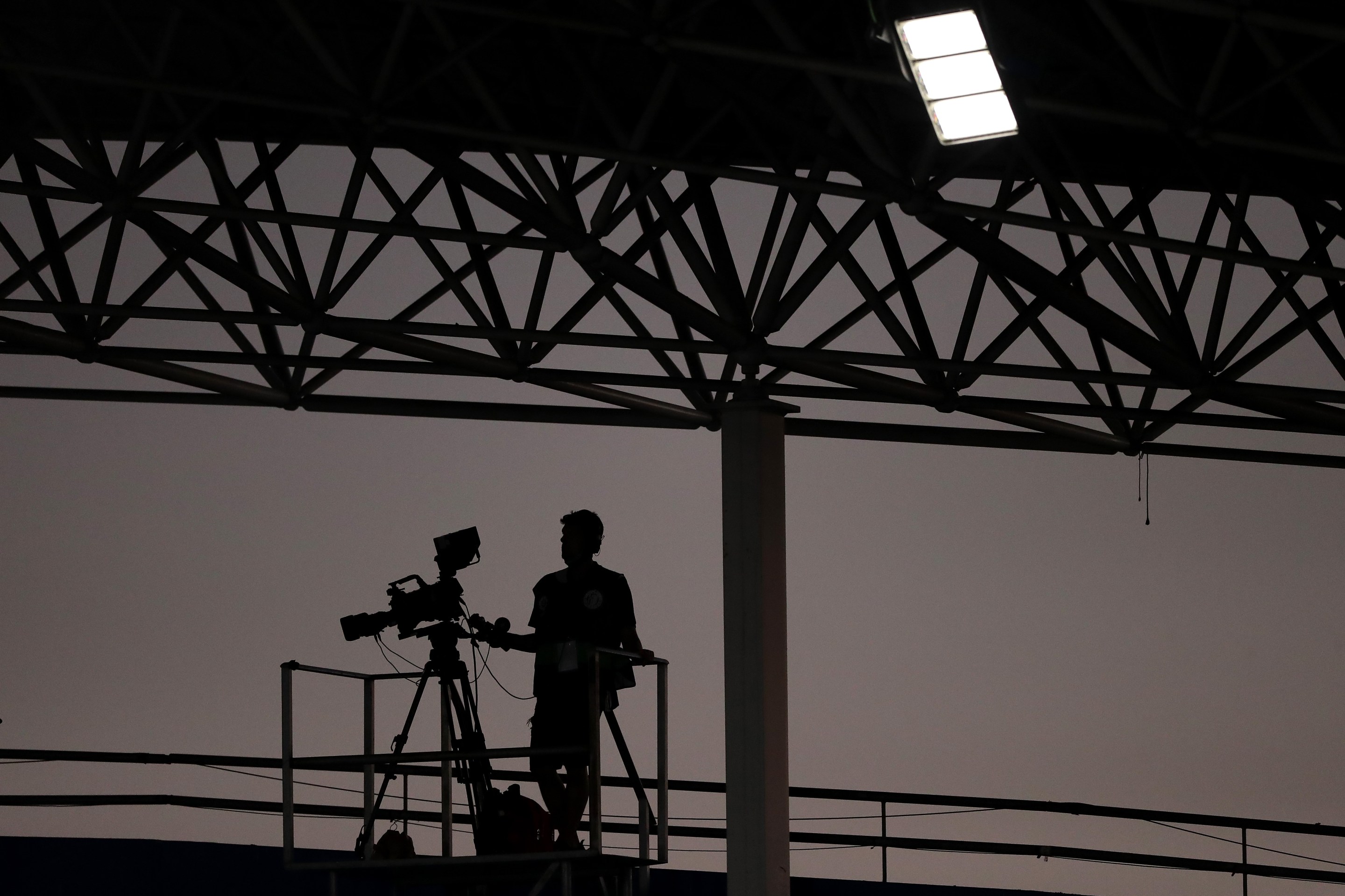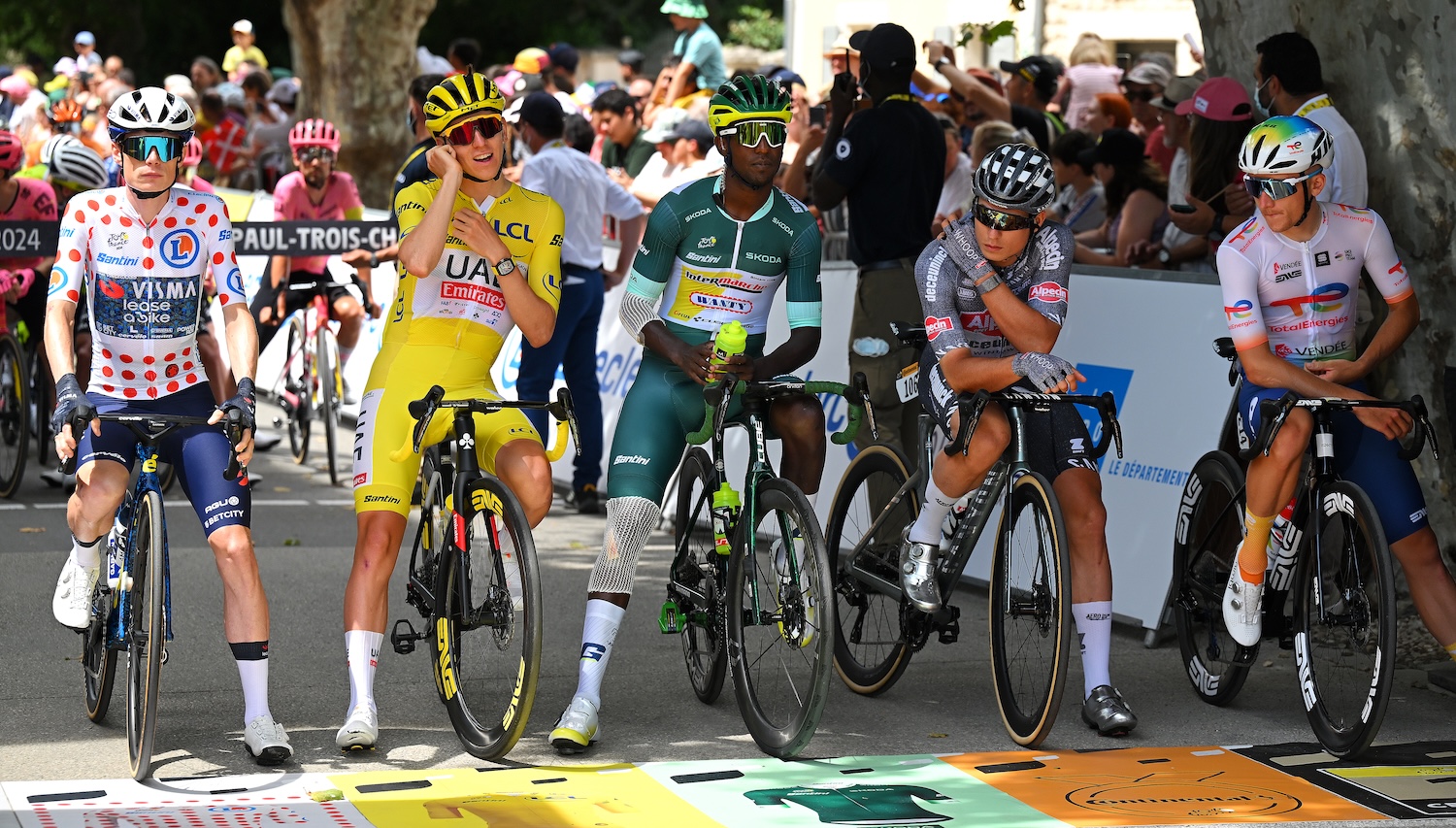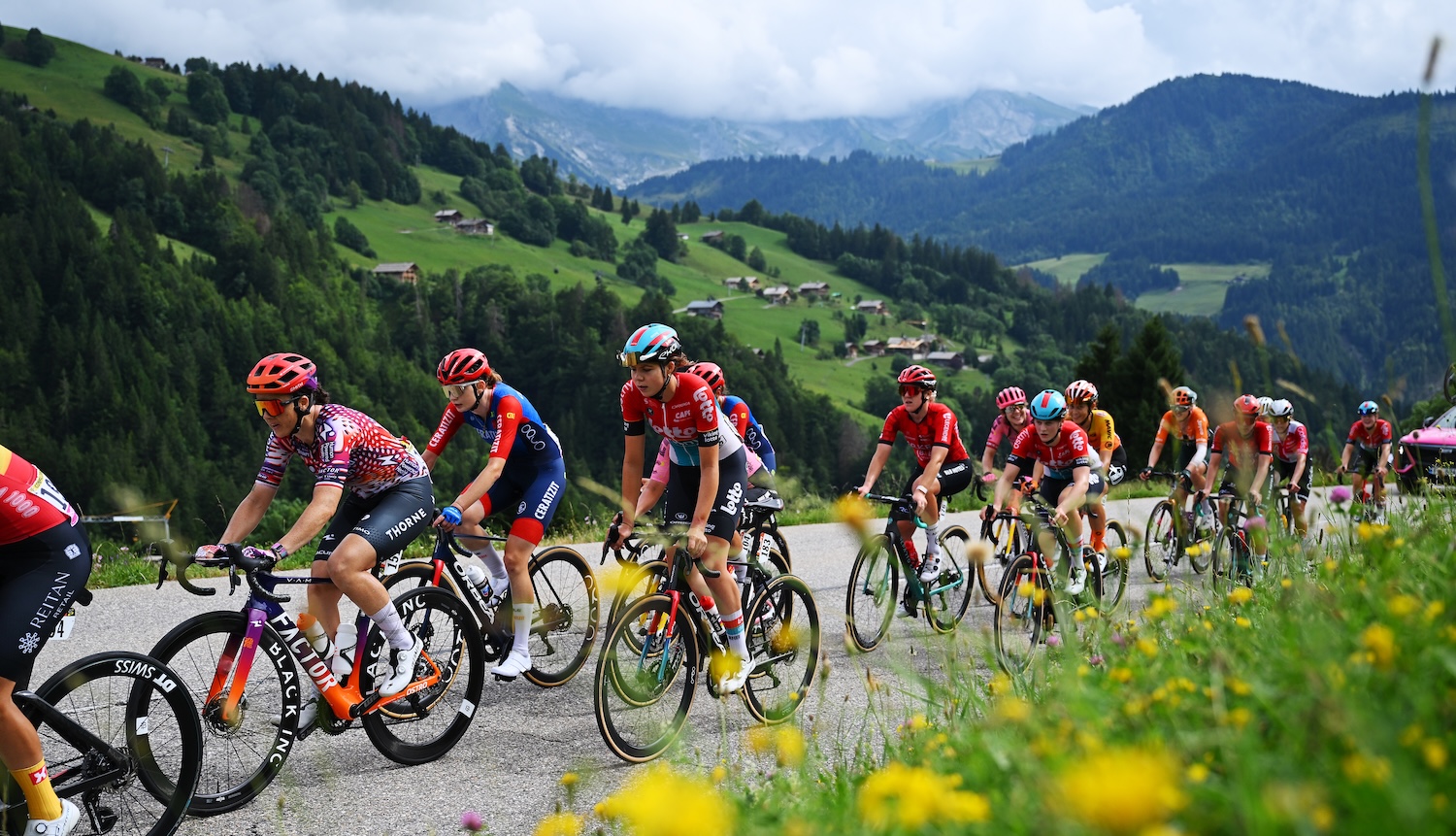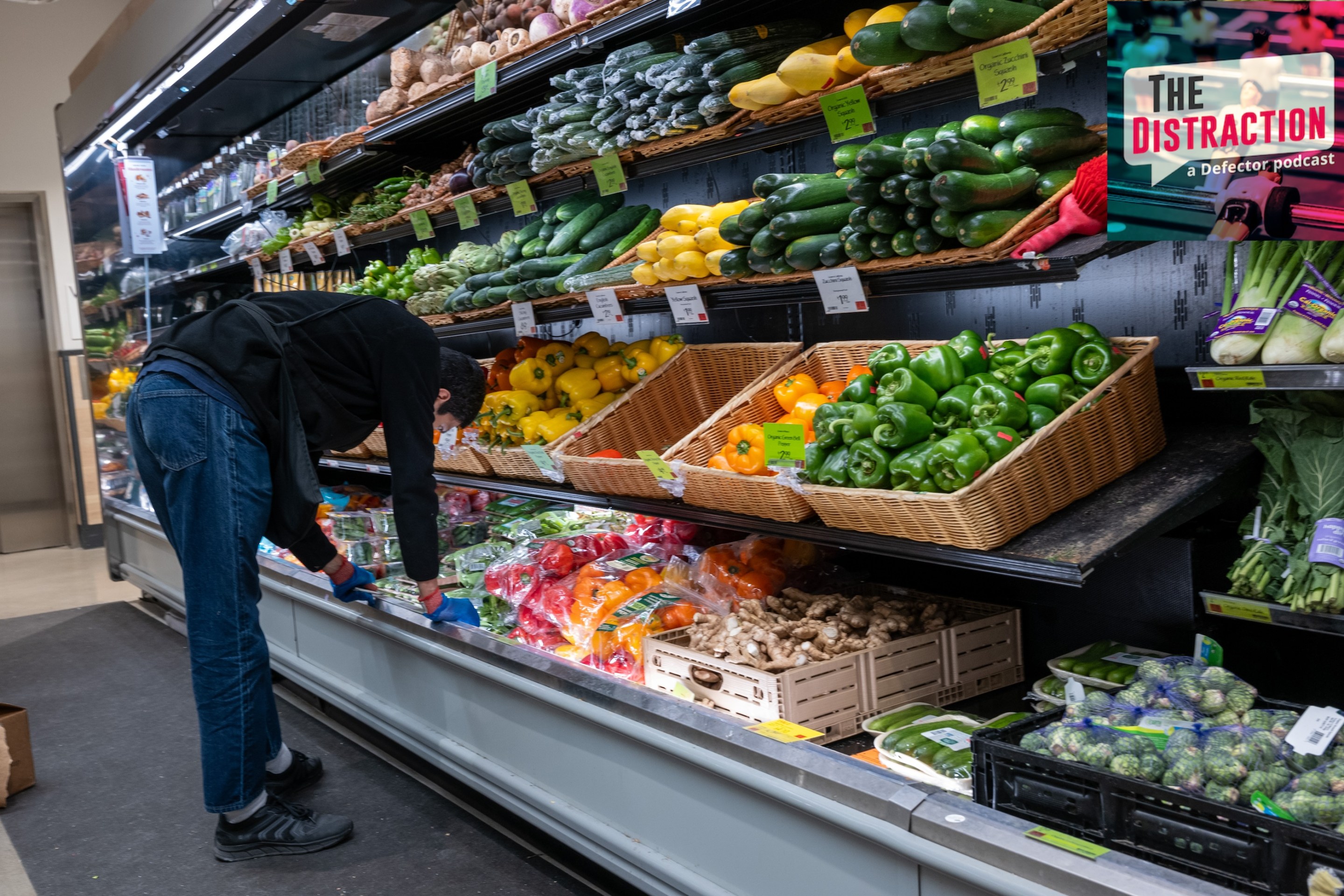March is always the busiest part of the year for Pam Chvotkin. She works as a production coordinator for live broadcast sporting events, and she’s one of the thousands of freelance contractors who make sure every play of every sporting event makes it onto screens across America, without any hiccups. Production coordinators like Chvotkin spend their days organizing live broadcasts. They can do everything from managing travel schedules and handling on-site logistics, to making sure crews are fed, informed, and on track. This past March, she had just finished working the CAA men's basketball tournament in Washington, D.C., when the rumors started. COVID-19 case numbers were on the rise, and there was talk of sporting events becoming closed to fans.
After working the CAA tournament, Chvotkin took a train up to New York City. Her job, unlike that of a camera operator, who has to find entertaining shots for the game, wasn’t affected that much when the Big East tournament announced there wouldn’t be any fans. The first day of games went well: no catastrophes, every hiccup handled. On March 12, Madison Square Garden was empty, the sounds of sneakers squeaking and basketballs thumping radiating in echoes across thousands of empty seats. They were in the middle of the quarterfinals between Creighton and St. John's when a voice came over the loudspeaker, announcing that the game had been canceled.
Chvotkin and her peers scrolled through Twitter for updates. She felt her hands in the air, unsure what to do with them. The rumors and early reports were dire: The tournament was cancelled. But until an official statement came down, everyone was left in a kind of purgatory. “Never in a million years did I think that sports would shut down,” Chvotkin says. “Seeing the Creighton basketball team walk out of the loading dock as we went back to the hotel was just heartbreaking. These tournaments are such a big deal. Everyone thought they were too big to cancel.”
But Chvotkin didn’t have the luxury of only worrying about the tournament. That evening, an official report was sent around. One of the referees at the CAA tournament she had worked the week before had tested positive for COVID-19. Chvotkin, in a New York City hotel, had a cough. Was it seasonal allergies? She did have a sniffle. Everything felt like a risk, but she didn’t feel sick. She tried to avoid other people in Penn Station and on the train back home to Arlington, Va., where she quarantined in her apartment and watched her life fall to pieces.
“As an independent contractor everything is booked a few weeks ahead and then you can add in local stuff,” she says. “That week, I looked at my calendar and just watched things disappear.” Emails rolled in one after another, more quickly than she could comprehend. The Big East was already cancelled. Then the Final Four. Then her gigs for Opening Week and Sunday Night Baseball were cancelled. Chvotkin, a self-described workaholic who says she probably takes 20 days off a year, found her life reduced to a single worn path between her couch and her bed.
Since early March, most freelance sports broadcasters have been out of work. Though some sports have returned, the number of crew members present at each event have been greatly reduced in order to meet coronavirus regulations. NBA and NHL games have completely cut local broadcasts, and even sports still playing in home stadiums (like the NFL and MLB) have reduced their crews to absolute essentials only.
Freelance broadcasters work invisibly. They are the ones who set up the shots you see on TV, add in closed captioning or graphics. They even update the score. They are the people who make sure that when an official replay is called for, the angles are there. Without these robust crews, the games can feel colder and more distant.
“The people who are suffering right now are the same people who bring you the Super Bowl and the NBA Finals. They bring you the Kentucky Derby and the Indianapolis 500. They are the same people who broadcast Wimbledon and the Olympics,” Mika Brown, a camera operator in Indianapolis, says. “They have captured every historic sports moment in the last several decades, and they are being ignored by the leagues, by the teams, and by the networks.”
Brown and many of her peers have been out of work for six months now. And they aren’t sure how long they can survive this way. Many of the more than a dozen sports broadcast freelancers who spoke to Defector for this story worry that they will never go back to work.
Brown knew in her stomach that the season was over when she watched the Jazz and Thunder walk off the court on March 11. She usually works as a freelance camera operator in Indianapolis for both Pacers and Colts games, but she was out of town on a job. When she reported to work at 7:00 a.m. the next morning for the second day of the PGA Players Tournament in Florida, she expected the tournament to get canceled, but still couldn’t believe it. “I lost four weeks of work in one night,” she says. “We’ve all experienced times where work is slow, but never anything like this.”
Brown says she’s one of the few women who work as a camera operator, and her days are 10 hours long at a minimum. If the game is at 7:00 p.m., she shows up to the arena at 1:00 p.m. She helps unpack the semi-trucks of equipment and get everything set up. There are broadcast freelancers who run the trucks, and those that mix audio, some that edit video, and some that do graphics. Brown carries a 30-pound camera around on her shoulder. She’s free during the game: No stand to tie her to one spot, which also means she’s moving constantly--running to the top of the stadium for a shot, making sure to follow the ball, to anticipate where the play will go so the camera will already be there when it happens. “It is 100 percent art,” she says. "We are live [on TV] all the time, and we want it to be perfect. We want to make sure that you, the viewer, don’t notice a single thing wrong. We have to get every shot. There’s no room for error.”
Almost all sports broadcasting freelancers are paid a day rate for 10 hours of work. Many work 20 or 30 days a month. The ones who do it full time make good money. Most of the full-time freelancers I spoke with made between $65,000 and $100,000 in 2019. But they aren’t full-time employees.
They have captured every historic sports moment in the last several decades, and they are being ignored by the leagues, by the teams, and by the networks.
Mika Brown
Sports broadcasting works a little differently for almost everyone who works in it. Most of the people working the cameras at a game are not hired directly by the teams. The Indianapolis Colts, for example, do not hire every camera operator in the stadium. They might have a couple people on staff, but the people who bring the game to your television station are mostly freelancers. They are contracted by either the station (like Fox Sports East) or a private company.
Most of the freelancers I spoke to had some money saved. Terry Lamey, a camera operator in Indianapolis, explained that part of the strategy of freelancing is “to bank your money during the busy times knowing that you’ll have to dip into it in the summer months.” For Lamey and Brown, the timing of the cancellations was particularly cruel. Indianapolis does not have a Major League Baseball team so they are used to summers being slow, but spring is usually their biggest money-making period of the year.
Watching the cancellations roll in was terrifying for all of the broadcast freelancers I spoke to, because they realized that even the protections they fought for weren’t enough to save them. Many freelance sports broadcasters are in a union. Most of those unionized workers fall under the International Alliance of Theatrical Stage Employees (IATSE), which also represents people behind the scenes in movies, television, stage productions, concerts, and any other live event.
The mechanics of the union are a little complicated because they aren’t bargaining with a single employer, but Fran O’Hern, the co-director of the Broadcast Department for IATSE, explained it to me like this: The union fights for a contract beneficial to the freelance workers (and smaller contracting companies) with the “rights holder” of the broadcast (usually regional sports networks). These contracts give union members benefits like standard pay, a lunch break, and holiday pay. O’Hern says IATSE has about 4,000-5,000 sports broadcasting freelancers in its union. “All of our members were out of work overnight,” O’Hern says.
For a lot of freelancers, what made the last six months bearable were PPP loans and the federal CARES Act provision for unemployment passed by Congress. “We are constantly on the phone trying to figure out what we could do to help the freelancers we work with, ” Mike Montoya, CEO of Faction Media Group, says. Faction Media Group is a film and production company founded at the beginning of this year that specializes in live sporting events. They are contracted by major networks like ESPN and FOX, and they then hire freelance broadcasters to help. As new business owners and members of the broadcasting community, Montoya and Shelby Thompson, COO, have seen firsthand the devastation this year has caused.
“There are tons and tons of contractors and individuals out of work,” Thompson says. “We made investments into our business and contractors make investments in expensive equipment, and all of that is at risk when there’s no work.” Thompson says that even though many of the people she works with were hesitant to apply for PPP loans, once they were convinced, the coronavirus stimulus bill and the PPP loans were a saving grace. “Being without work and with expenses for a whole year, and knowing what everyone was making before, that’s nerve-wracking,” Thompson says.
Many major networks agreed to pay their broadcast freelancers a little bit to tide them over. Some didn’t. The only thing keeping these workers afloat, they said, was government assistance. Like the millions of Americans who lost wages earlier this year, the extra $600 per week unemployment payment passed by Congress is what allowed them to pay their bills.
“For me, [the Coronavirus Relief Bill] was what saved me. I’ve been treading water for so long,” Brown says. “When I had that money, I could sleep at night because I knew at least I would be able to pay my bills and put food on the table. Now, I don’t know.”
At the end of July, the CARES unemployment benefits ran out, and most broadcasters began dipping into their savings. Sports were beginning to come back, but not for them.
“Many of us have never been on unemployment and honestly without the help we received from the CARES Act and our local IATSE 317, I don’t know how many of us would have survived,” Judie Lyn Burnham, an audio engineering assistant in Indianapolis, says. “I’m worried. The virus has slashed through our profession, taking people’s lives and livelihoods.”
“This is the biggest part of me,” Brown says. “It really is my passion. I miss it, and it has been really difficult. I don’t think i’ve touched a camera in 160 days.”
Because the industry is small and the workers are often on the road together for weeks at a time, the rumor mill has been hot for the last six months. Every time a league considered an option for reopening, the broadcast freelancers would get emails and texts. They didn’t have any work, but there was hope on the horizon. They watched the NHL debate when and how to return all summer, and were bummed when the league settled on Canada, which was not allowing Americans to travel for work.
The NBA returned the same weekend the CARES act expired. Chvotkin got a call from the NBA early in the week, and she was asked if she could be in Orlando by Friday. “It’s a big ask to stay in a bubble for three months, to potentially expose yourself to the virus,” Chvotkin says. “But it was an easy decision for me. Of course, I was gonna do it.” She packed her bags and moved into a Disney resort property where she has stayed since the last week of July, and will stay until October. She gets tested regularly: nose swabbed, cheek swabbed, temperature taken.
“There’s a weird, uneasy feeling,” she says. “You’re working and you want to do a good job but you also don’t want to get sick.” At the same time, though, she says she’s grateful to be working. The jobs she usually did in the summer have been slashed.
Because the NHL and NBA are playing in bubbles, they need fewer broadcast freelancers than if games were being played in dozens of cities. On top of that, the number of crews at a game has been drastically reduced. “Most games there are at least two crews,” Brown says, “usually three, sometimes as many as five.”
At pre-coronavirus games, the home and away teams each have their own broadcast crew. If the game is being shown on a national channel, like ESPN or the Big 10 Network, one of those might send a crew of their own. That means there are usually a lot of jobs available at any given game for a freelance broadcaster like Brown. She could be a camera operator for the Colts’ home station, or for whoever the visiting team’s station is, or for a bigger sports network wanting to broadcast the game.
“It’s strange that the virus has taken the fans away, and even more strange and heartbreaking is that our 50-plus home and away crew members have been reduced to just handfuls due to COVID-19,” Burnham says.
But to reduce the number of people in the stadium, leagues have turned to a single, universal crew that both teams then lay their individual graphics over. That means at best half of the jobs have been cut.
People aren’t sure how they are going to survive. When I talk to Lamey, he considers his options. He’s in his 50s. Could he get a job working somewhere? Where? It’s not like he can use his camera operating skills at a company right now. There aren’t any jobs for camera operators. There aren’t that many jobs, period. According to the U.S. Bureau of Labor Statistics there are 6.6 million job openings right now, but there are 13.6 million unemployed people.
Lamey estimates that with unemployment benefits, he thinks he’ll be okay financially through the end of the year. He says he’s worried, though, about needing to find another job if things don’t improve. “I’m not going anywhere,” he says. “It’s not just a paycheck. I love doing it. I just happen to be able to make money off of it.” He worries about the people who are younger than him.
What concerns a lot of the broadcast freelancers is a potential permanent loss of talent. “People who have been here 30 to 40 years are thinking about retiring. That’s heartbreaking for our business. It’s a learned skill,” Brown says. “They’ve been in the business so long because they’re so good at what they do. It would be really, really heartbreaking if people decide not to come back”
Brown started working at a TV station in Indianapolis right out of high school, and was there for six years before becoming a sports broadcast freelancer. She emphasizes that the career is one of depth and time. “The only reason I’m able to do this job is because someone saw promise in me. She helped me get work. She taught me how to do this,” Brown says. The way most people get into the career is through mentorship. If a whole swath of talented longtimers retire, who will be there to teach the art of the job to the next generation?
Workers worry that the ramifications of this downturn could set the industry back a decade, and that a rebound from the pandemic won’t help them.
“At every turn over the last 30 to 40 years, whenever there was an opportunity to downsize the workforce at local television stations, the stations have used that to put the screws to their employees,” O’Hearn says. He has no doubt that there will be longterm cuts to the industry after coronavirus. He’s optimistic, though, that it will recover eventually as it has in the past. “As a union, we do not intend to let the employers use this temporary downturn in the economy and in our industry as a way to deprive our members of the just rewards of the contributions they make to the sports they cover.”
Many of the games right now are being shot with a skeleton crew, and a lot of the cameras are being controlled remotely. NBA games in the bubble, for example, have a remotely operated camera at mid-court, the job Brown would usually do.
It’s not just a paycheck. I love doing it. I just happen to be able to make money off of it.
Terry Lamey
“Sports fans miss us,” Brown says, “Or they will. They just don’t realize it yet.” She explains how a camera run by a robot is limited. A camera can’t run up to the top of the arena to get a better shot on its own. A camera doesn’t know the rules of basketball and anticipate what will happen ahead of time. Sure, it can be remotely controlled, she says, but half of the art of her job is responding in real time to what’s happening around her. In her ear, she hears her director warning her about something happening on another part of the court that she may need to pan over to while she captures the action on the other side. Meanwhile, she’s keeping one eye on the bench because there’s an argument happening between two coaches, and she might need to get her camera on that in a hurry. You can’t do all of that from a remote control room.
“We don’t believe we can be replaced by robots, but we might be.” Thompson says. “This environment means [the broadcasts] are being reduced down to just a game, which is just like a scrimmage.” Thompson points out how a great sports broadcast should be dynamic and engaging in ways that go beyond just capturing what’s happening on the court or field.
“One thing that you do notice now with the cameras being far away is it is much more cold. They aren’t letting cameras near the players so you’re not getting those intimate shots as a viewer,” Montoya says. Watching games after our conversation, I noticed that Montoya is right. There aren’t enough cameras in any sport for the close-up shots we’ve come to expect. NHL games, in particular, are missing the close framing on a big hit, or the celebratory smiles after a goal.
What makes these coronavirus telecasts so worrying for out-of-work broadcasters is the fear that leagues, television stations, and fans will simply get used to live sports being broadcast from a more removed position. Watch enough thrilling NBA bubble games, and you might stop noticing all the little ways in which the action has been dulled. If you go back and compare current games to pre-coronavirus sports broadcasts, though, the difference is startling.
In Game 2 of the Western Conference Finals, the Denver Nuggets were up 103-102 with 2.1 seconds remaining after coming back from a 16-point deficit. They lost that game thanks to Anthony Davis, who hit a buzzer-beating three and created one of the most iconic moments of the 2020 playoffs. But watch the camera work in the immediate aftermath of the shot:
It’s choppy. After the shot goes in the camera lags, staying pointed at the basket after Davis has run out of frame. Then, as the celebration begins, the mob of Lakers players seem far away, because they are. Instead of seeing the action through a person with a shoulder camera rushing into the middle of the scrum, we’re left looking through a zoomed-in shot from the remote operated camera on the sideline.
The result is that this meaningful moment feels less exciting (or devastating depending on your rooting interests), because the lack of camera operators keeps the shots distant, and therefore colder. The camera is too far away to catch all the noises and expressions in the huddle, the sweat falling down faces, the energy that comes from proximity. The images on the screen aren’t jostling around with the rhythm of the camera operator being bumped by ecstatic basketball players.
Even the replays have less emotion. After he hits the game-winning shot, Davis turns to run back towards his bench. A good half-court camera operator would have been right there in Davis’s path, because the person operating it would have known to anticipate that reaction. Instead, we only see Davis’s celebration from the side, at a distance.
Now watch this sequence from a 2006 playoff game between the Lakers and Suns:
We see everything from multiple distances and angles. We’re right there when Kobe Bryant clutches Smush Parker’s head and whispers things into his ear; we’re right there when he howls and pulls his jersey over to show his heart; we’re right there to see anguish fall over the faces of the Suns players as they slink back to the locker room.
That passion, that intimacy, that closeness is what we lose if remote cameras become the status quo for professional sports. But without a side-by-side comparison, it is easy not to notice the change: to mistake your disinterest or diminished emotional response to the game as a result of something other than the lack of good camera work.
It would be easy for leagues to decide that this year’s games have proven that the cuts to broadcast crews can be made more permanent. Many camera operators I spoke to worry that everyone will start using universal feeds (one crew) for most games. What that means is no team-specific storylines, no investment in local dramas, worse angles on stunning plays. The fact that we might not notice the difference immediately is dangerous for the livelihood of broadcast freelancers, but it also makes our experience as viewers and fans of sports demonstrably worse.
One can hope that the leagues will get their broadcasts back to business as usual once it becomes safe to do so, but it’s always dangerous to count on billion-dollar businesses to decide against cutting corners. Right now, given the way things have gone over the last six months, the out-of-work freelancers I spoke to aren’t feeling confident. “No one is looking out for the people who make it all possible,” Brown says.







